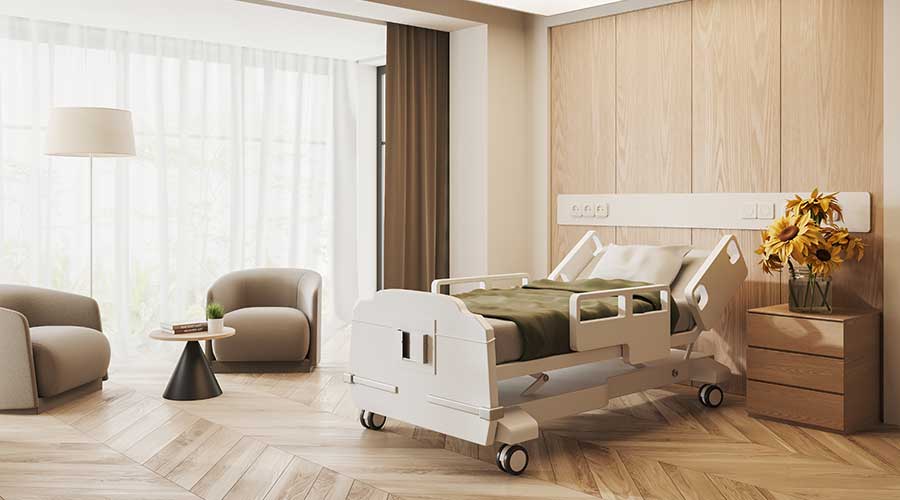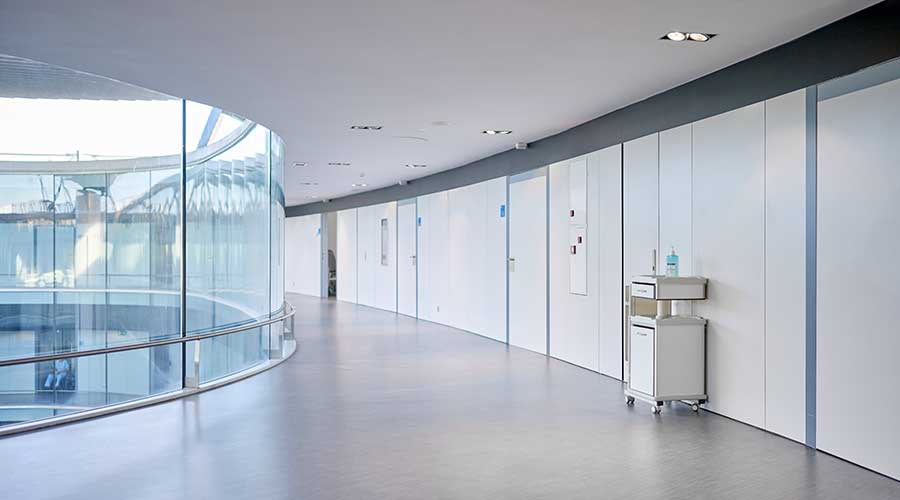Furniture plays a subtle role in healthcare facilities, as it helps how comfortable or even home-like the facility feels. Overall, that can end up contributing to a more holistic healing experience. In this manufacturer roundtable, Healthcare Facilities Today speaks to furniture manufacturers about how furniture does that in healthcare settings.
How can proper furniture contribute to a more holistic healing experience in a healthcare facility?
“Providing patient room furniture that accommodates and encourages the family or loved ones to stay has been proven to shorten the length of stay and improve recovery times. This is due to reduced medication errors; patient stress levels are lower when the healing power of touch is employed, and staff injuries are avoided.”
— Spokesperson from Wieland Healthcare
“It can contribute by addressing various aspects of patient well-being. Last year, Stance introduced the Kiwi Bean Bag chairs, a functional and fun design to provide therapeutic and calming experiences for patients of all ages. The chairs provide a visually appealing and comfortable seating solution that contributes to a more holistic and empathetic approach to behavioral health treatment.”
— Carl Kennedy, founder and chief executive officer, Stance Healthcare
How can furniture help make healthcare settings feel less clinical and more like home?
“By offering a variety of seating options within a waiting space, families feel empowered because they have a choice and can somewhat control an otherwise anxious experience. This might look like a small intimate grouping of chairs to create privacy for a large family, or maybe tall tables with stools for visitors who may need to work, or even large-scale upholstered seating with a table arm for someone who is exhausted and needs to be alone. By anticipating a wide range of needs, the patient-family experience can be much less stressful.”
— Spokesperson from Wieland Healthcare
“Furniture is pivotal in transforming healthcare settings into more homey environments through thoughtful design considerations. By selecting furniture that aligns with comforting aesthetics, incorporating residential-style elements, and utilizing materials that evoke warmth, healthcare spaces can mitigate the clinical atmosphere.
We have several collections that make it easy to keep an aesthetic patient room. One example would be the Lotus collection designed for behavioral health spaces. The collection includes essential pieces like beds, desks, and shelving units. The cohesive collection offers storage options that are designed to accommodate books, clothing, and personal belongings, encouraging individuals to personalize their environment. With the Lotus collection, integrating comforting woodgrain-inspired color palettes makes the healthcare and behavioral health environment feel less clinical and more like a welcoming and comforting home setting.”
— Carl Kennedy, founder and chief executive officer, Stance Healthcare
Jeff Wardon, Jr. is the assistant editor for the facilities market.

 Healthcare Facilities Look to Future-Proof Facilities
Healthcare Facilities Look to Future-Proof Facilities Yale New Haven Health Experiences Data Breach
Yale New Haven Health Experiences Data Breach Rethinking Facilities: A New-Generation Approach to Behavioral Healthcare
Rethinking Facilities: A New-Generation Approach to Behavioral Healthcare ThedaCare to Open Medical Center in Fond du Lac, Wisconsin
ThedaCare to Open Medical Center in Fond du Lac, Wisconsin UF Health Hospitals Rely on Green Globes to Realize Their Full Potential
UF Health Hospitals Rely on Green Globes to Realize Their Full Potential